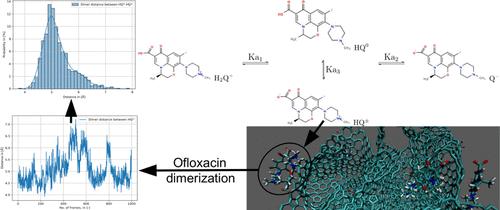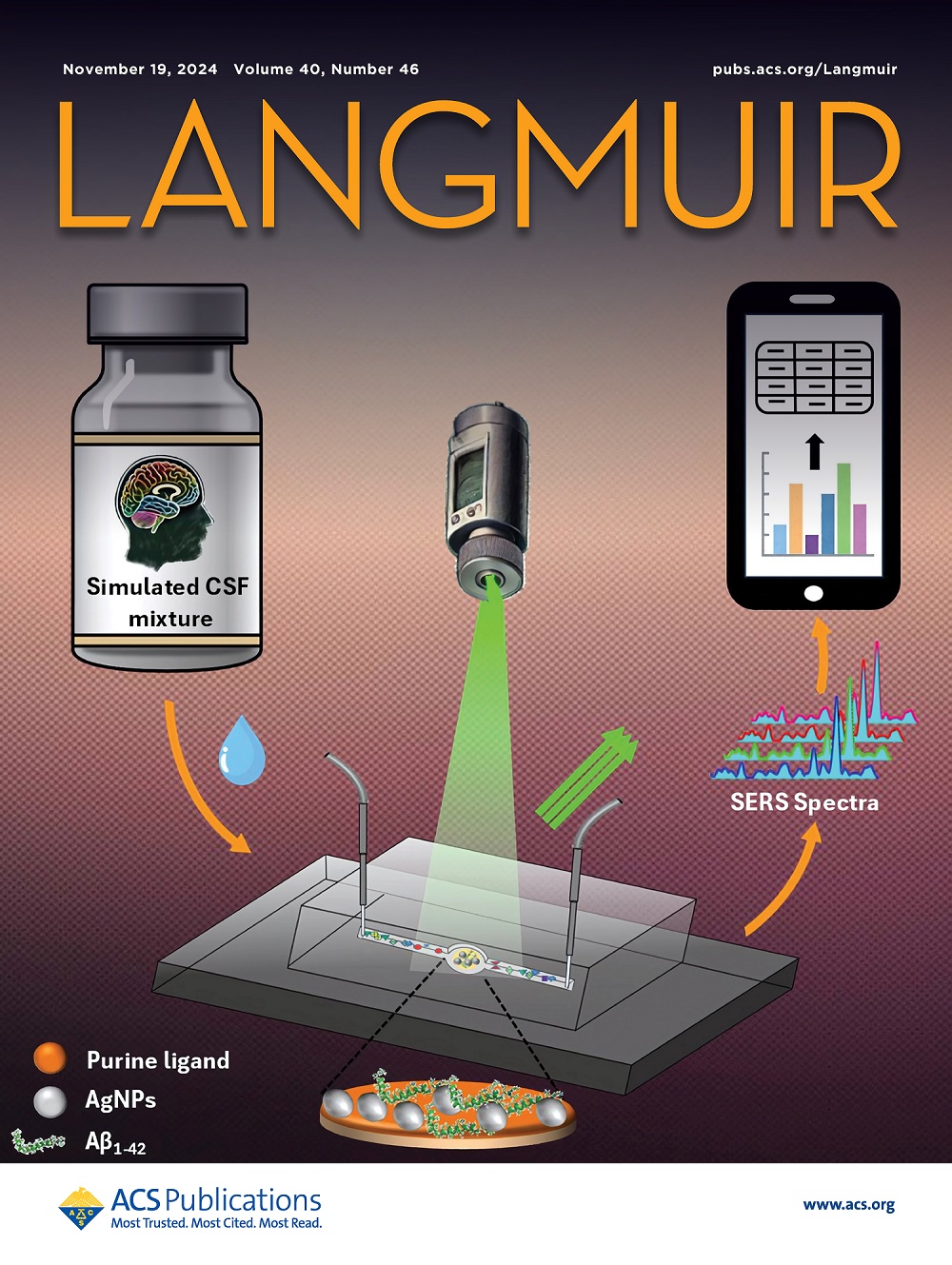Unraveling Ofloxacin Behavior in Aqueous Environments: Molecular Dynamics of Colloidal Formation and Surface Adsorption Mechanisms
IF 3.7
2区 化学
Q2 CHEMISTRY, MULTIDISCIPLINARY
引用次数: 0
Abstract
Ofloxacin, a commonly prescribed antibiotic, raises serious environmental concerns due to its persistence in aquatic systems. This study offers new insights into the environmental behavior of ofloxacin and its interactions with carbon-based adsorbents with the aim of enhancing our understanding of its removal mechanisms via adsorption processes. Using a comprehensive computational approach, we analyzed the speciation, pKa values, and solubility of ofloxacin across various pH conditions, accounting for all four microspecies, including the often-overlooked neutral form. Our findings indicate that clustering of ofloxacin in water is influenced not only by solubility but also by electrostatic repulsion, dipole creation, and π–π interactions. At extreme pH levels, clustering is primarily driven by Coulombic forces and strong π–π interactions between different ofloxacin molecules. Density functional theory (DFT) was employed to optimize the molecular structures, and molecular dynamics (MD) simulations explored interactions among ofloxacin, water, and carbon surfaces. Hybrid Reverse Monte Carlo (HRMC) simulations were used to determine the disordered structure of an activated carbon cloth (ACC), specifically, KIP1200 (Dacarb company, France), for use in MD simulations. KIP1200 contains a small amount of oxygen (less than 2%), which supports our assumption of a predominantly carbon-based structure. Surface interactions were found to vary significantly depending on the ofloxacin form. The neutral form exhibited strong π–π interactions with flat surfaces, whereas the zwitterionic form displayed a greater affinity for curved surfaces. On KIP1200, adsorption was pH-dependent: acidic conditions enhanced adsorption due to reduced repulsion, while adsorption decreased under basic conditions. The aromatic rings in ofloxacin, combined with the high electronegativity of its fluorine atoms, played a critical role in facilitating adsorption through π–π interactions. These results deepen our understanding of ofloxacin microspecies, colloid formation, and adsorption mechanisms under diverse conditions.

求助全文
约1分钟内获得全文
求助全文
来源期刊

Langmuir
化学-材料科学:综合
CiteScore
6.50
自引率
10.30%
发文量
1464
审稿时长
2.1 months
期刊介绍:
Langmuir is an interdisciplinary journal publishing articles in the following subject categories:
Colloids: surfactants and self-assembly, dispersions, emulsions, foams
Interfaces: adsorption, reactions, films, forces
Biological Interfaces: biocolloids, biomolecular and biomimetic materials
Materials: nano- and mesostructured materials, polymers, gels, liquid crystals
Electrochemistry: interfacial charge transfer, charge transport, electrocatalysis, electrokinetic phenomena, bioelectrochemistry
Devices and Applications: sensors, fluidics, patterning, catalysis, photonic crystals
However, when high-impact, original work is submitted that does not fit within the above categories, decisions to accept or decline such papers will be based on one criteria: What Would Irving Do?
Langmuir ranks #2 in citations out of 136 journals in the category of Physical Chemistry with 113,157 total citations. The journal received an Impact Factor of 4.384*.
This journal is also indexed in the categories of Materials Science (ranked #1) and Multidisciplinary Chemistry (ranked #5).
 求助内容:
求助内容: 应助结果提醒方式:
应助结果提醒方式:


